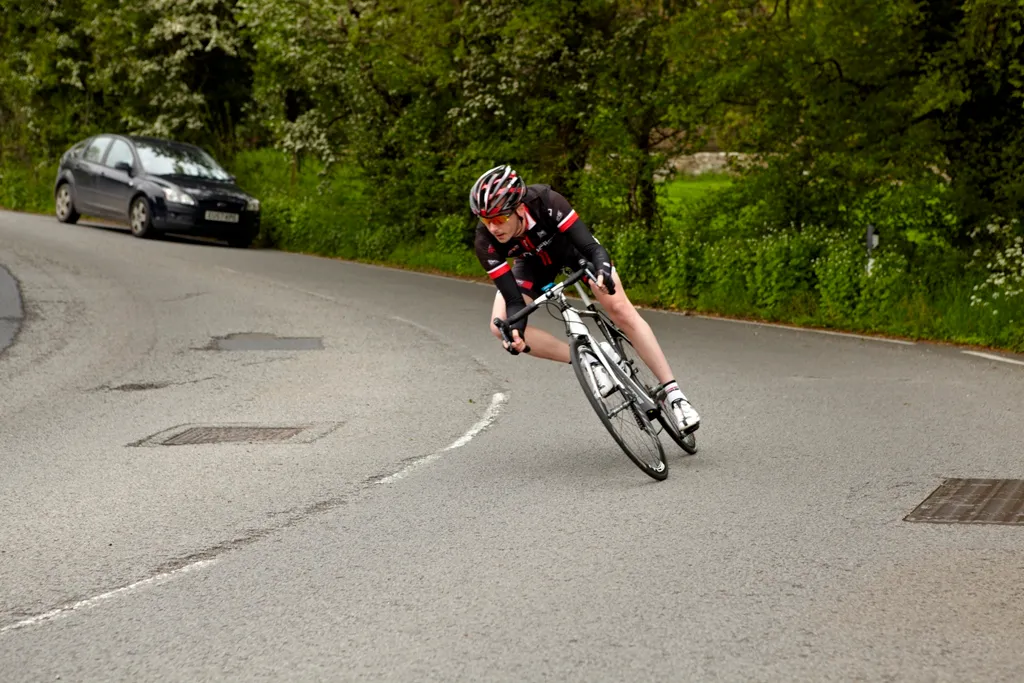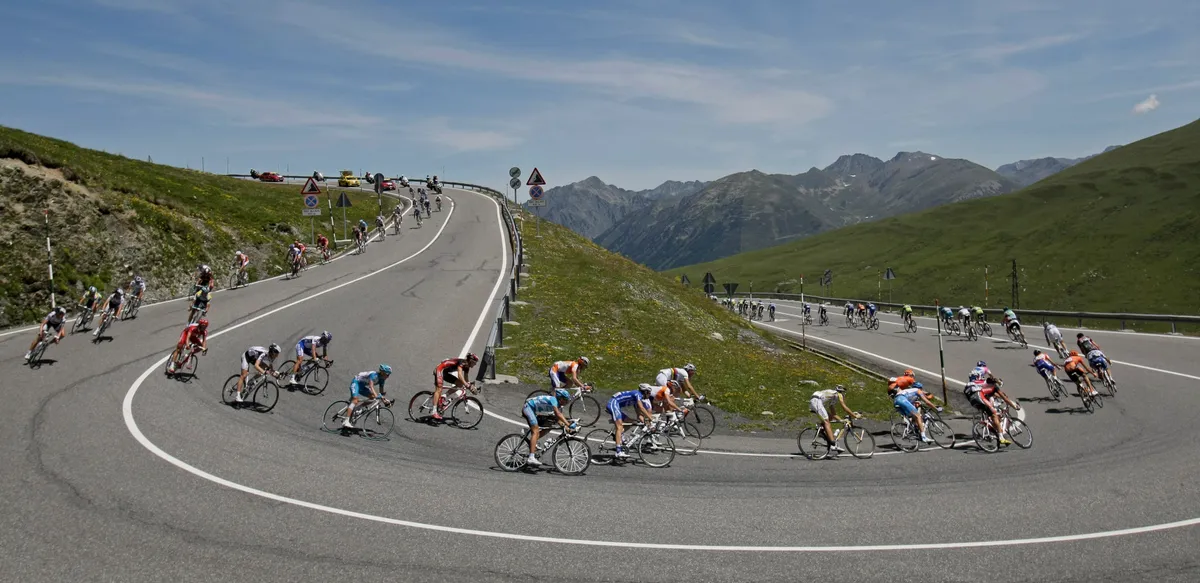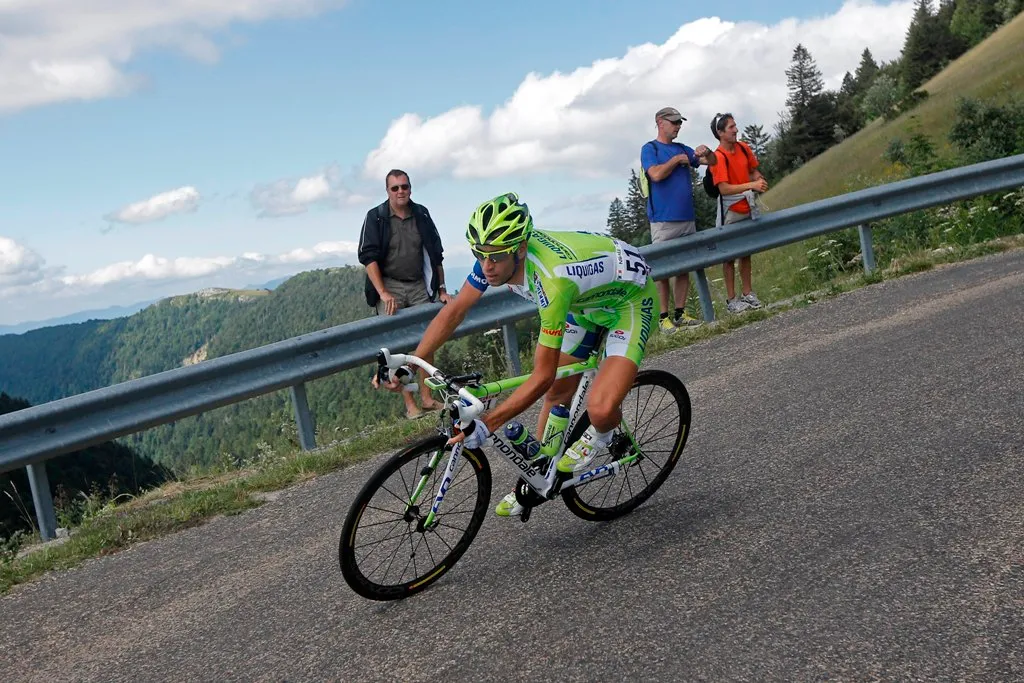The sight of a pro rider carving elegant arcs down a whipping mountain descent is a joy to behold. The poise, balance and control can seem effortless, as this famous video of Fabian Cancellera chasing back on after a puncture proves:
Fabien cancellara descent
Watching it, one could be forgiven for thinking that bike-makers had reached the last word in terms of inherently stable and balanced race bikes. Alas, they have not. Anyone who’s experienced a speed wobble will nod sagely.
In fact, the importance of what was once thought to give a bike its stability – the wheels’ gyroscopic effect and steering alignment – has been eroded in recent years in bike physics studies, and the importance of weight distribution given more credence.
Dave Luyckx, head engineer at Eddy Merckx Cycles, says the bike industry had been working on accepted conventions of stability for decades – conventions that might be along the right lines but hadn’t been fully explored or understood, especially not when the shape and size of a rider has such a bearing on stability.
“There are some misconceptions about bike stability,” he told BikeRadar. “If you look at a normal bike model now, you will always see the same things coming back, like 72-degree, 73-degree head tube angles. If you go into literature from the last 100 years you will see the same factors coming back into bike stability modelling, like the gyroscopic effect of the wheels, your wheelbase and all of those things.”
New research
Among bike manufacturers, the exploration of bike stability has played second fiddle to the pursuit of lightness and rigidity. However, Eddy Merckx Cycles are hoping to change that.
They have been awarded more than €150,000 to work with academics from Ghent University to explore what makes a bike stable at speed, the parameters that affect stability and, further down the line, perhaps suggest design changes that could improve stability and safety for all types of rider. We’re just blue sky thinking here, but confidence-boosting stability has increased downhill speed written all over it.
Crucially, Luyckx, a composite and aerospace engineer by training, explained that the research will focus on exploring what happens to bike stability when variables are added – usually factors relating to rider height, weight and athletic ability.
It’s worthy, time consuming and largely theoretical work for now but, if the research team could bottom out some of those variables, the findings could lead to fairly radical changes to bike design.

More stability should mean faster descending
As an example of how far there is to go in understanding bike stability, Luyckx used an analogy involving his dad and Mont Ventoux. Both riders use a 56cm frames, but his father is 25kg (55lb) heavier.
“Two riders of different weights going at 80km/h down a hill will create hugely different loads on the frame,” Luyckx explained. “The only problem is that, today, we don’t know what will be the impact on your stability. Will you be tempted to pull hard on your brakes or will you be confident enough to take the corner at, let’s say, 40 or 60km/h?”
At best, greater downhill speeds could give competitive riders another platform from which to attack, or at least save energy used to recover from decelerations. For the rest of us, it will mean increased confidence in bike handling and therefore a more pleasant riding experience.
New innovation
So what changes in bike design could come from this research? Luyckx refused to elaborate – he wants it to be an Eddy Merckx Cycles special – but the research might lead to a completely new steerer assembly and far greater frame customisation depending on the bike’s use.
“If you look at it today, the only difference between a steering assembly from a bike built 40 years ago and one built today is steel to alloy to carbon – it’s still two bearings and a steerer tube,” he said.
The varying length of a head tube from, say, 120mm on an aggressive racing frame to 210mm for a comfy sportive ride also profoundly affects stability, said Luyckx, with the steerer tube “making weird shapes under extreme loads”.
“This behaviour becomes unpredictable and then you always have to compensate for this behaviour,” he added, meaning that frame builders are forced into a situation where manufacturers have to engineer bikes for the lowest common denominator.

A better understanding of bike stability could unlock new performance gains
And the thing is, because of the way carbon frames are made (by the hundred), bike designers have to compensate in all frames, whether a 65kg (143lb) pro or 90kg (198lb) sportive rider end up in the saddle.
So, once the data has been boiled down, there could be greater customisation of inherently better balanced carbon monocoque frames; Luyckx said the company could experiment with putting inserts into the moulds during production, to alter geometry for all sizes and shapes of rider – not just for comfort, as is the case now, but for safety and stability too.
For a number of years, frame rigidity has been the be all and end all in terms of power efficiency: the stiffer the bike, the more power is left on the road. But it seems Eddy Merckx Cycles are trying to open the door on a little explored area of performance gains. “If you improve how the bike handles you will get more efficiency,” concluded Luyckx.
For more information on Eddy Merckx Cycles see www.eddymerckx.be.

